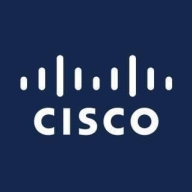

Palo Alto Networks Panorama and Cisco Security Cloud Control are key competitors in the network security management category. Panorama holds an edge in centralized management and application identification, while Cisco is recognized for robust integration capabilities.
Features: Palo Alto Networks Panorama offers centralized management, advanced application identification, and strong automation for threat management. Cisco Security Cloud Control excels in integration with multiple security components, centralized device management, and automation capabilities.
Room for Improvement: Panorama users desire better scheduling of updates, improved automation documentation, and more responsive technical support. Cisco could improve by enhancing third-party integration, user interface navigation, and logging capabilities.
Ease of Deployment and Customer Service: Panorama supports on-premises and hybrid environments, though users report complexity in non-technical setups. Cisco, with a focus on public and private clouds, provides responsive support but could improve third-party service integration.
Pricing and ROI: Panorama is priced high, considered justified by large enterprises for its feature set. It provides a good ROI for environments with multiple firewalls. Cisco's pricing reflects its feature set value, particularly beneficial for users in Cisco's ecosystem. Both highlight distinct organizational benefits.
| Product | Market Share (%) |
|---|---|
| Palo Alto Networks Panorama | 6.8% |
| Cisco Security Cloud Control | 1.8% |
| Other | 91.4% |


| Company Size | Count |
|---|---|
| Small Business | 6 |
| Midsize Enterprise | 3 |
| Large Enterprise | 6 |
| Company Size | Count |
|---|---|
| Small Business | 33 |
| Midsize Enterprise | 14 |
| Large Enterprise | 46 |
Cisco Security Cloud Control offers centralized management, real-time visibility, and AI-driven automation for on-premises and cloud environments, simplifying scalability and deployment.
With a unified approach, Cisco Security Cloud Control enhances security posture by providing cross-platform insights across Cisco's ecosystem. It accelerates threat detection and optimizes policy enforcement through a blend of AI automation and natural language querying capabilities. The intuitive platform serves multiple devices, enabling comprehensive management of Secure Firewall, Secure Access, and other services with guidance from the Cisco AI Assistant. It also includes an AI Operations feature that identifies critical issues and provides real-time insights, enhancing response times while a policy analyzer improves security hygiene by detecting and closing security gaps. Its automation minimizes manual tasks, secures cloud-stored configurations, and supports two-factor authentication. However, it could benefit from improvements in navigation clarity, bulk change handling, and expanded third-party integrations.
What are the key features of Cisco Security Cloud Control?Industries implementing Cisco Security Cloud Control leverage its capabilities for tasks ranging from firewall management to intrusion prevention. Enterprises use it to streamline policy management, automate configurations, and integrate Cisco devices with cloud strategies, benefiting from simplified security orchestration and network segmentation.
Panorama network security management provides static rules and dynamic security updates in an ever-changing threat landscape. Reduce administrator workload and improve your overall security posture with a single rule base for firewall, threat prevention, URL filtering, application awareness, user identification, file blocking and data filtering.
We monitor all Firewall Security Management reviews to prevent fraudulent reviews and keep review quality high. We do not post reviews by company employees or direct competitors. We validate each review for authenticity via cross-reference with LinkedIn, and personal follow-up with the reviewer when necessary.